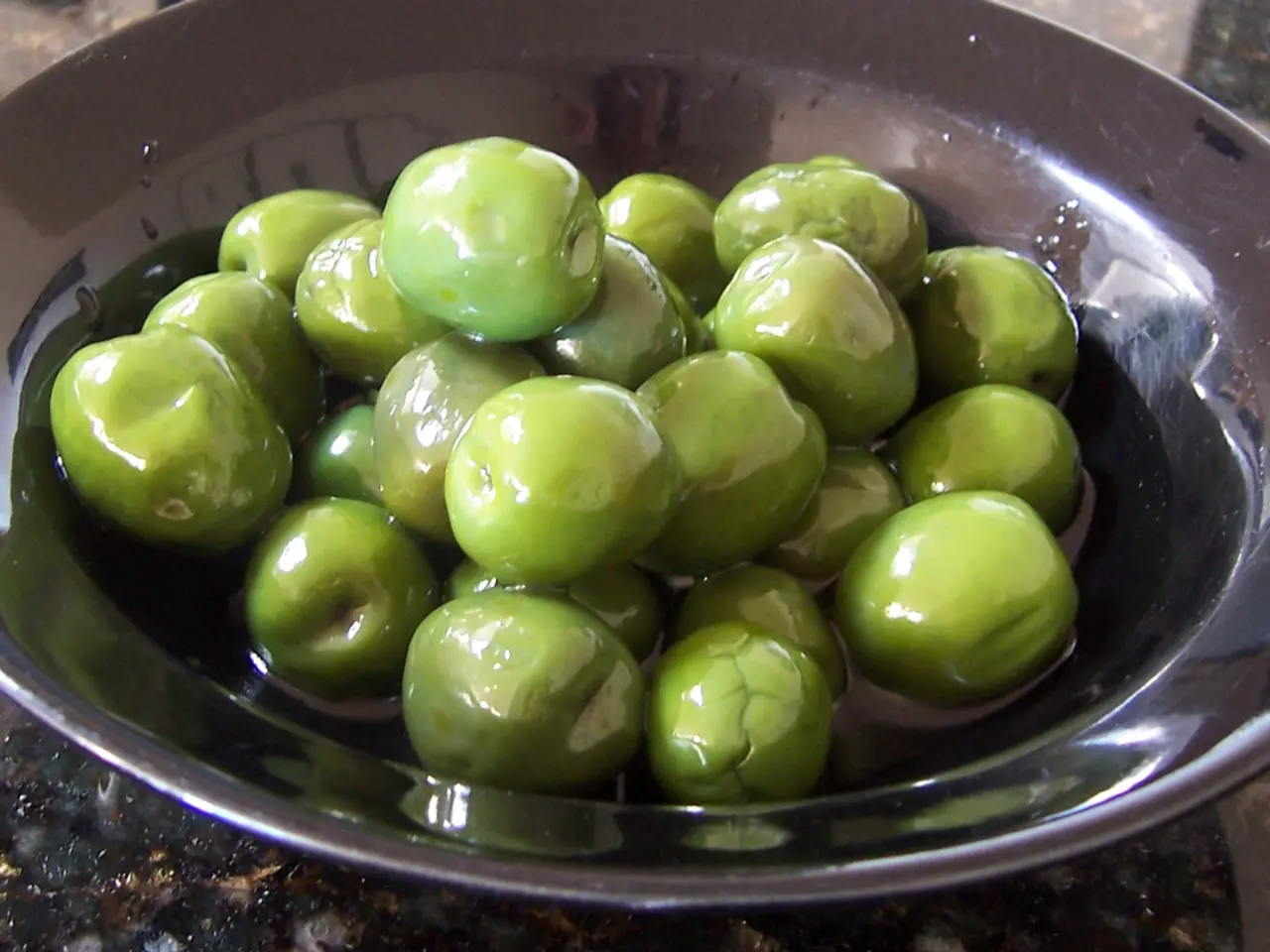Revolutionizing Food Monitoring and Safety through Small, Eatable Lasers
In a groundbreaking development, scientists at the Jožef Stefan Institute in Slovenia have created the first-ever edible microlaser using ordinary olive oil. This innovative technology, published in the journal Advanced Optical Materials, promises to revolutionize food security, reduce waste, and enhance consumer trust by making the food supply chain more transparent and responsive.
The microlasers are composed of droplets of olive oil, which naturally contain enough chlorophyll—a natural optical gain substance—to function as lasers without any additional doping agents. These microlaser droplets act as tiny optical cavities, using a mechanism called whispering gallery mode resonance, where light circulates inside the droplet. When excited by an external light source, these droplets emit laser light that is sensitive to environmental factors such as pH, temperature, sugar concentration, and microbial growth.
The potential applications of these edible lasers extend beyond food and medication monitoring. For instance, they can be embedded directly into foods to offer real-time sensing of freshness by detecting changes in the food’s chemical and biological state. Because of their highly sensitive emission properties, they can serve as edible optical barcodes, encoding specific information such as the date and potentially carrying the identity of a manufacturer or an expiration date.
Moreover, these sensors can potentially detect spoilage and microbial growth inside foods without introducing non-food-safe materials. They could verify product origins, such as confirming if fish is truly wild-caught or farmed, adding transparency to the food supply chain.
The microlasers are made entirely from food-safe, edible materials, including olive oil, glycerol mixtures, and natural pigments like chlorophyll or riboflavin. They are non-toxic and safe for ingestion, stable and optically readable over extended periods, and require no synthetic or inedible additives to function.
Researchers are now exploring ways to expand the range of natural optical gain materials, develop more sophisticated barcode encoding schemes for complex product data, integrate with consumer devices for easy laser signal reading and interpretation, and explore wider sensor capabilities to detect a broader range of food quality indicators. They are also investigating large-scale manufacturing and embedding techniques for commercial food products.
The microlaser's potential applications were demonstrated to extend beyond food and medication monitoring. In a room full of mirrors, multiple droplets shine more brightly, like a concentrated beam of light. The brightness of the chlorophyll in the microlaser changes in accordance with the size and density of the oil droplets.
The researchers successfully encoded data within the microlaser droplets, similar to a barcode, which remained intact for over a year. They tested more than a dozen different types of materials, and olive oil generated the cleanest laser. The specific date of April 26, 2017, was encoded in the microlaser and remained intact for over a year.
The technology was introduced in the journal Advanced Optical Materials earlier this month. The study authors concluded that there are many possibilities for developing various edible lasers and their applications. Scientists believe that the potential applications of these edible lasers could ultimately find their way to everyday use, offering a safe and easy way to monitor food or medications from inside the body.
- The edible microlasers, composed of ordinary olive oil and potentially other food-safe materials, could be used as tiny optical barcodes, encoding specific information such as the date of production or the identity of a manufacturer or an expiration date.
- In the future, these edible sensors could be integrated directly into foods, allowing for real-time sensing of freshness by detecting changes in the food’s chemical and biological state, thus enhancing consumer trust and food security.
- Beyond food monitoring, the technology of edible microlasers could potentially revolutionize the field of medicine, offering a safe and non-invasive way to monitor medications from within the body.




